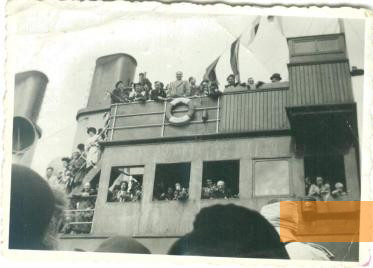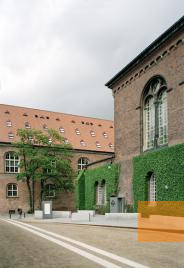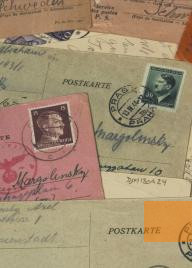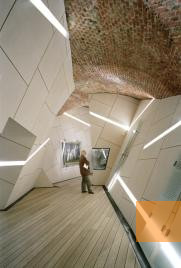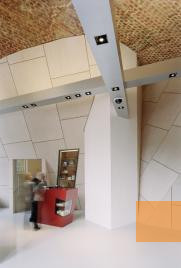The Danish Jewish Museum was opened in Copenhagen on June 8, 2004. The museum tells the history of Jews in Denmark since the 17th century. The exhibition also commemorates the civil courage of non-Jewish Danes who saved a majority of the Danish Jews by shipping them into neutral Sweden in 1943.
Jewish life had been present in Denmark since the beginning of the 17th century. The first Jews were primarily Sephardic Jews from Portugal. Later, many Ashkenazim settled in Denmark. The constitution of 1849 granted the Jews equal rights.
On April 9, 1940, the German Wehrmacht occupied Denmark. There were around 7,500 Jews in Denmark at the time, including 1,500 refugees. The Danish government's policy of cooperation with the occupying forces protected Jews from persecution at first.
Due to the crisis caused by the increasing strength of the Danish resistance movement, the Danish government resigned in the spring of 1943. The German occupiers declared a state of emergency and began preparations for the deportation of the country's Jewish residents. When this became known in Danish circles, they set in motion a large-scale rescue operation, helping 7,000 Jews escape into neutral Sweden. However, 481 Jews were arrested by German policemen and deported to Theresienstadt. 53 perished there.
On April 9, 1940, the German Wehrmacht occupied Denmark. There were around 7,500 Jews in Denmark at the time, including 1,500 refugees. The Danish government's policy of cooperation with the occupying forces protected Jews from persecution at first.
Due to the crisis caused by the increasing strength of the Danish resistance movement, the Danish government resigned in the spring of 1943. The German occupiers declared a state of emergency and began preparations for the deportation of the country's Jewish residents. When this became known in Danish circles, they set in motion a large-scale rescue operation, helping 7,000 Jews escape into neutral Sweden. However, 481 Jews were arrested by German policemen and deported to Theresienstadt. 53 perished there.
The museum is dedicated to the 481 Jews deported from Denmark to Theresienstadt, but it also presents a general history of Jewish life in Denmark.
After decades of planning, the Danish Jewish Museum was opened on June 8, 2004. The museum is located in the old Royal Library. Torah scrolls, artistic craftwork and manuscripts were hidden here during the war.
Daniel Libeskind designed the contemporary interior of the Museum. The Hebrew word »Mitzvah« is literally stamped on the groundplan of the building's angular and winding architecture. »Mitzvah« - meaning a good deed - refers to the rescue of around 7,000 Jews from Denmark. Today, the Museum is considered the national centre for Jewish history, culture and art in Denmark. The permanent exhibition presents 400 years of Jewish-Danish history in five sections.
Daniel Libeskind designed the contemporary interior of the Museum. The Hebrew word »Mitzvah« is literally stamped on the groundplan of the building's angular and winding architecture. »Mitzvah« - meaning a good deed - refers to the rescue of around 7,000 Jews from Denmark. Today, the Museum is considered the national centre for Jewish history, culture and art in Denmark. The permanent exhibition presents 400 years of Jewish-Danish history in five sections.
- Name
- Dansk Jødisk Museum
- Address
-
Proviantpassagen 6
1218 København - Phone
- +45 (0)33 112 218
- Web
- http://www.jewmus.dk
- info@jewmus.dk
- Open
- June to August: Tuesday to Sunday 10 a.m. to 5 p.m.;
September to May: Thursday 12.30 p.m. to 6.30 p.m., Friday to Sunday 12 p.m. to 5 p.m., Monday to Wednesday closed - Possibilities
- Exhibitions, guided tours, events, newsletter, library, during the summer months guidedcen tours of Jewish Copenhagen and Jewish cemetaries


